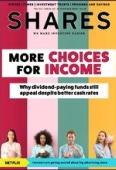Archived article
Please note that tax, investment, pension and ISA rules can change and the information and any views contained in this article may now be inaccurate.
What exactly is going to happen to the state pension?

Can you tell me what the state pension will be worth next year? I’m trying to plan my spending for next year but there seems to be conflicting information about whether or not the triple-lock will be in place.
Stephanie
Tom Selby, AJ Bell Head of Retirement Policy, says:
Unfortunately, I can’t tell you with absolute confidence what your state pension will be worth from April next year.
The latest position of the Government, as articulated by former prime minister Liz Truss, is that the ‘triple-lock’ manifesto pledge will be honoured for next year’s state pension increase.
However, Truss is no longer in office and the new and current chancellor, Jeremy Hunt, had previously said state pension increases were under review. We may get more clarity on all this at an Autumn Statement now planned for 17 November.
The amount of state pension you are entitled to will primarily depend on your age and National Insurance (NI) contribution record.
The full flat-rate state pension is paid to those who reached state pension age from 6 April 2016 and is worth £185.15 per week in 2022/23. Those who have a 35-year NI record receive the full amount, with deductions made for each year missing from your record.
The basic state pension is paid to those who reached state pension age before 6 April 2016 and is worth £141.85 per week. If you had an NI contribution record of less than 30 years, then you may have received less than this amount.
You may also have built up ‘additional state pension’ entitlements under the old system. For those who did so and reached state pension age from 6 April 2016, these entitlements were honoured in the new system.
This means you may receive more or less than the full flat-rate amount, depending in part on whether you chose to ‘contract out’ of the additional state pension in return for lower NI contributions.
The triple-lock is applied to the full flat-rate state pension and the basic state pension. It promises to increase the benefits by the highest of average earnings growth, inflation or 2.5%.
The earnings figure traditionally used is for the three months to July (5.5%), while the inflation figure is usually CPI for September (10.1%). If the triple-lock is maintained, this implies that from April 2023 the full flat-rate state pension, paid to those reaching state pension age from 6 April 2016, will increase from £185.15 per week to £203.85 per week (£10,600.20 per year) from April next year The basic state pension, paid to those who reached state pension age before 6 April 2016, will increase from £141.85 per week to £156.20 per week (£8,122.40 per year).
However, if earnings growth for the three months to July is used instead, the full-flat rate state pension would rise to £195.35 per week. The basic state pension would rise to £149.65 per week.
DO YOU HAVE A QUESTION ON RETIREMENT ISSUES?
Send an email to asktom@sharesmagazine.co.uk with the words ‘Retirement question’ in the subject line. We’ll do our best to respond in a future edition of Shares.
Please note, we only provide information and we do not provide financial advice. If you’re unsure please consult a suitably qualified financial adviser. We cannot comment on individual investment portfolios.
Important information:
These articles are provided by Shares magazine which is published by AJ Bell Media, a part of AJ Bell. Shares is not written by AJ Bell.
Shares is provided for your general information and use and is not a personal recommendation to invest. It is not intended to be relied upon by you in making or not making any investment decisions. The investments referred to in these articles will not be suitable for all investors. If in doubt please seek appropriate independent financial advice.
Investors acting on the information in these articles do so at their own risk and AJ Bell Media and its staff do not accept liability for losses suffered by investors as a result of their investment decisions.
Issue contents
Feature
- Boom and bust, where do investors now stand with semiconductor stocks?
- What earnings from big US companies are saying about markets and the economy
- More choices for income: Why dividend-paying funds still appeal despite better cash rates
- How Saudi Arabia is making a strong start to life as an emerging market
- Emerging markets: Views from the experts
Great Ideas
News
- Tesla hints at $10 billion share buyback to prop up sagging share price
- Find out why Frasers has bagged a stake in ASOS
- Why Netflix’s big move into advertising is getting investors excited
- Pearson’s digital transformation puts it on an upward path as margins improve
- Markets steady as Sunak becomes PM, but is this the calm before the storm?
- Why Chinese trusts and funds are hitting new multi-year lows
- Revealed: stocks with the most weekly upgrades and downgrades
- Why FTSE 250 piping group Genuit is down in the dumps
 magazine
magazine








